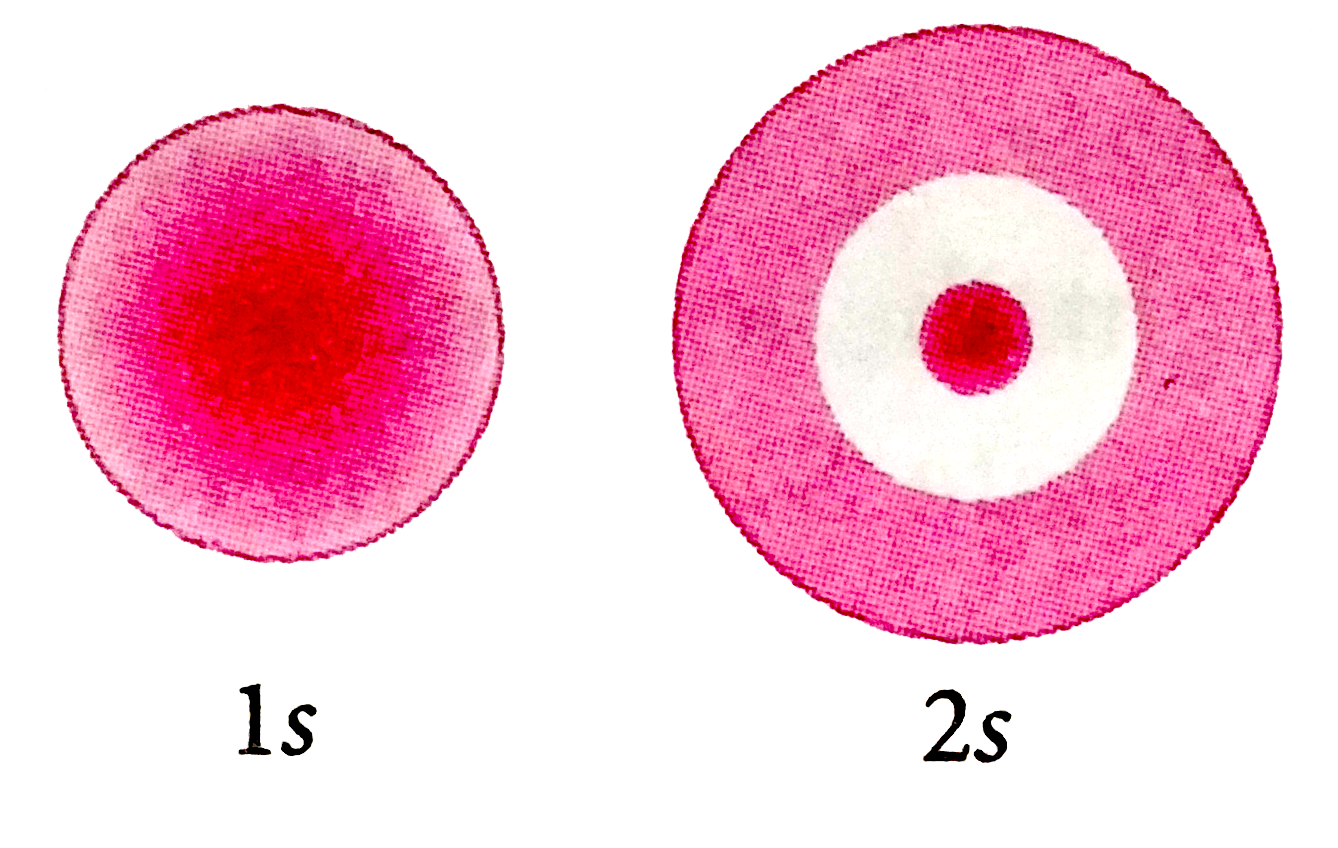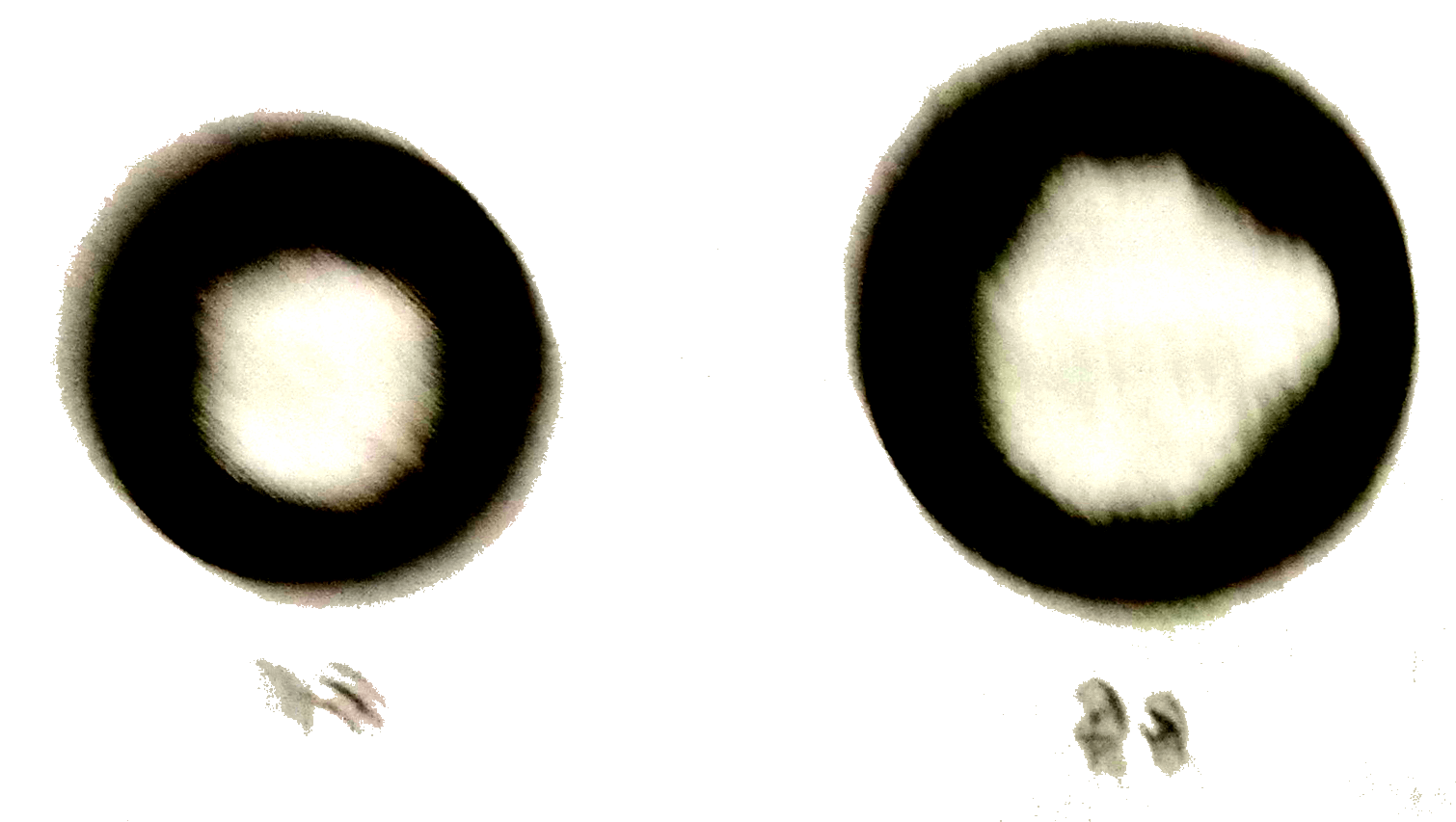Energy density in the region between 1s and 2s orbital is …………
To solve the question regarding the energy density in the region between the 1s and 2s orbitals, we can follow these steps:
1. Understanding Orbitals:
- The 1s and 2s orbitals are both spherical in shape and represent different energy levels in an atom. The 1s orbital is the lowest energy level, while the 2s orbital is at a higher energy level.
2. Electron Probability Density:
- The concept of electron density refers to the probability of finding an electron in a particular region of space. For s orbitals, this probability density is highest near the nucleus and decreases as you move away from it.
3. Region Between 1s and 2s Orbitals:
- The region between the 1s and 2s orbitals is a space where there is no probability of finding an electron. This is because the 1s orbital is completely filled with electrons, and the 2s orbital starts at a higher energy level.
4. Conclusion on Energy Density:
- Since there are no electrons present in the space between the 1s and 2s orbitals, the electron density in this region is zero. Consequently, the energy density, which is related to the presence of electrons, is also zero.
5. Final Answer:
- Therefore, the energy density in the region between the 1s and 2s orbitals is 0.
- The 1s and 2s orbitals are both spherical in shape and represent different energy levels in an atom. The 1s orbital is the lowest energy level, while the 2s orbital is at a higher energy level.
- The concept of electron density refers to the probability of finding an electron in a particular region of space. For s orbitals, this probability density is highest near the nucleus and decreases as you move away from it.
- The region between the 1s and 2s orbitals is a space where there is no probability of finding an electron. This is because the 1s orbital is completely filled with electrons, and the 2s orbital starts at a higher energy level.
- Since there are no electrons present in the space between the 1s and 2s orbitals, the electron density in this region is zero. Consequently, the energy density, which is related to the presence of electrons, is also zero.
- Therefore, the energy density in the region between the 1s and 2s orbitals is 0.
Topper's Solved these Questions
- BOOK - CENGAGE CHEMISTRY ENGLISHCHAPTER - ATOMIC STRUCTUREEXERCISE - Exercises True And False30videos
ATOMIC STRUCTURE
- BOOK - CENGAGE CHEMISTRY ENGLISHCHAPTER - ATOMIC STRUCTUREEXERCISE - Archives (Linked Comprehension3videos
ATOMIC STRUCTURE
- BOOK - CENGAGE CHEMISTRY ENGLISHCHAPTER - ATOMIC STRUCTUREEXERCISE - Exercises Integer11videos
ATOMIC STRUCTURE
- BOOK - CENGAGE CHEMISTRY ENGLISHCHAPTER - APPENDIX - INORGANIC VOLUME 1EXERCISE - chapter-7 Single correct answer1videos
APPENDIX - INORGANIC VOLUME 1
- BOOK - CENGAGE CHEMISTRY ENGLISHCHAPTER - CHEMICAL BONDING AND MOLECULAR STRUCTUREEXERCISE - Archives Subjective15videos
CHEMICAL BONDING AND MOLECULAR STRUCTURE
Similar Questions
What is the shape of 1s and 2s orbital .Give two point of difference between 1s and 2s orbital
View SolutionThe orbital angular momentum of an electron in 2s orbital is ………
View SolutionThe probability density plots of 1s and 2s atomic orbitals are given in figures.

The density of dots in a region represents the probability density of finding electrons in the region. On the basis of the above diagram, which of the following statements is incorect?View SolutionThe probability density plots of 1 s and 2s orbitals are given in figure.

The density of dots in a region represetns the probability density of finding electrons in the region. On the basis of above diagram which of the following statements is incorrect?View SolutionAccording to hybridisation theory, the % s-character in sp,sp2andsp3 hybrid orbitals is 50, 33.3 and 25 respectively, but this is not true for all the species. When θ is the bond angle between equivalent hybrid orbitals then % s and p-character in hybrid orbitals (when only s and p-orbitals are involved in hybridisation) can be calculated by the following formula :
cosθ=SS−1=P−1P
Q. Smallest OˆSO bond angle is found in :View SolutionAccording to hybridisation theory, the % s-character in sp,sp2andsp3 hybrid orbitals is 50, 33.3 and 25 respectively, but this is not true for all the species. When θ is the bond angle between equivalent hybrid orbitals then % s and p-character in hybrid orbitals (when only s and p-orbitals are involved in hybridisation) can be calculated by the following formula :
cosθ=SS−1=P−1P
Q. Correct order of P−P bond length in the following compound is :View SolutionAccording to hybridisation theory, the % s-character in sp,sp2andsp3 hybrid orbitals is 50, 33.3 and 25 respectively, but this is not true for all the species. When θ is the bond angle between equivalent hybrid orbitals then % s and p-character in hybrid orbitals (when only s and p-orbitals are involved in hybridisation) can be calculated by the following formula :
cosθ=SS−1=P−1P
Q. Correct order of P−P bond length in the following compound is :View SolutionThe ratio of the differrence between the first and second Bohr orbit energies to that between second and third Bohr orbit energies is
View SolutionThe ratio of the differrence between the first and second Bohr orbit energies to that between second and third Bohr orbit energies is
View SolutionIn H atom when electron jumps from 1s to 2s orbital,
View Solution

